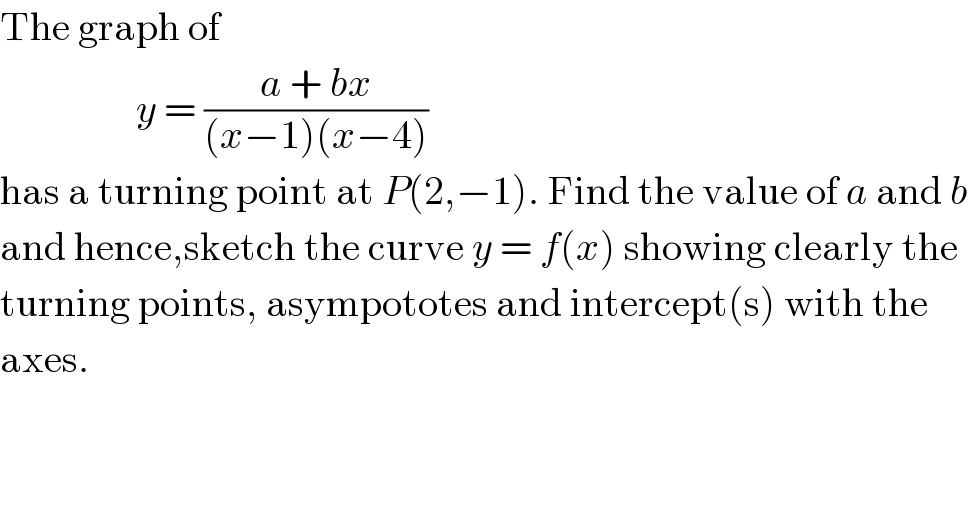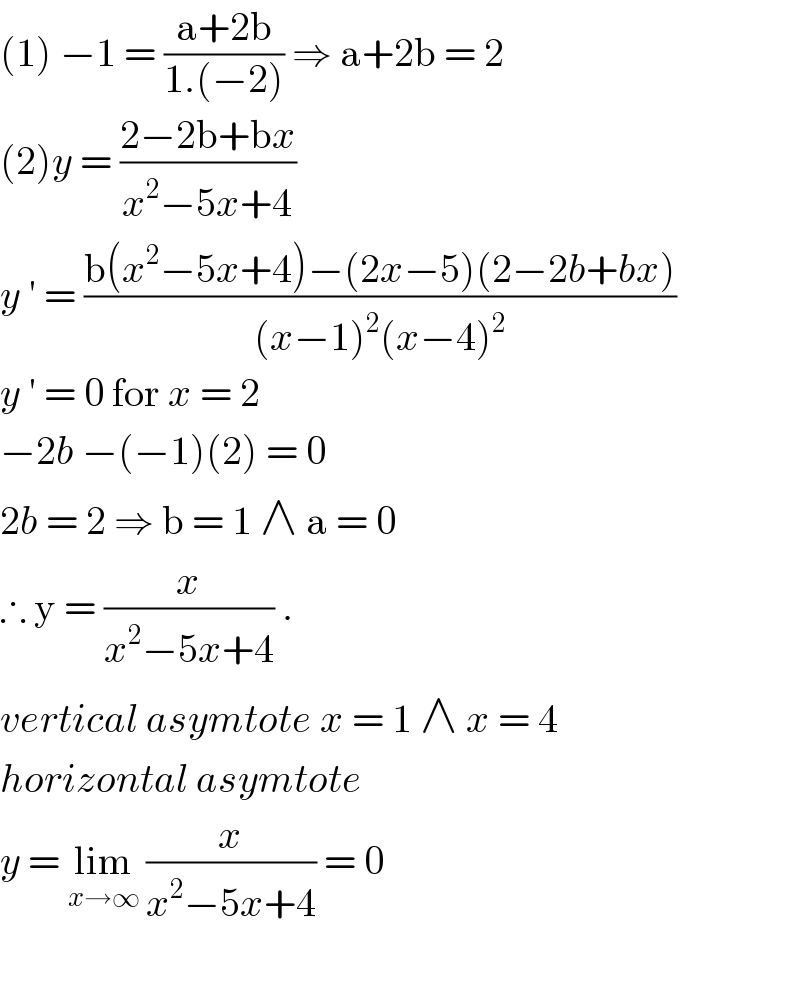
Question and Answers Forum
Question Number 83964 by Rio Michael last updated on 08/Mar/20

Answered by john santu last updated on 08/Mar/20

Commented by jagoll last updated on 08/Mar/20

Commented by jagoll last updated on 08/Mar/20

Commented by Rio Michael last updated on 08/Mar/20

